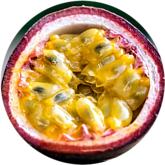
The idea of using natural means to clear up acne fast is fascinating, isn’t it? The fact is that it’s absolutely possible and we’ll find out how. Knowing what to do and consistency is key.
Acne can be attacked from both inside and outside. We previously considered some ways to do so internally, let’s look at some effective external ways of attacking it
Two critical naturally occurring ingredients for treating acne are Linoleic Acid and Vitamin A.
WHAT TO CONSIDER
There are various sources of natural ingredients that can help clear acne as identified in past contents on this website. While looking at trying out topical natural ingredients, there are important issues to consider as follows;
- Irritation from use
- Efficacy
- Safety
- Method of delivery
LINOLEIC ACID FOR TOPICAL USE
One of the essential fatty acids our skin is made up of is a polyunsaturated fatty acid called linoleic acid (omega-6 group). It’s crucial in acne treatment, and said to be depleted in people suffering with acne. More so, It’s been shown that linoleic acid helps clear up acne fast and also prevents drying and scaling of the skin.
People have reported improvement within 30 days of applying linoleic acid topically. In addition to eating foods rich in linoleic, this fatty acid can also be applied topically when extracted from various food components as it exerts potent anti-inflammatory effect.
The seeds of passion fruit contain high level of linoleic acid and piceatannol that have anti-inflammatory, antioxidant and anti-bacterial effects. Other sources it can be extracted from include sunflower seeds, seed beans (e.g soybeans), blue-green alga (e.g. spirulina) etc.
WHEN EXTRACTED, they can be made into oils or aqueous formations (e.g. cream) which can be safely applied topically.
At 8 weeks of applying products for acne containing linoleic acid, benefits include;

- remarkable progress in clearing up acne
- unclogging of pores
- reduced total lesion count (both inflammatory and non-inflammatory)
- reduced ultraviolet induced red fluorescence (UVRF) spots seen in acne – caused by the bacteria Propionibacterium acne (P.acne)
- smooth skin
RELATED ARTICLE: Clear up Acne Fast – Natural Topical Vitamins and Minerals
VITAMIN A FOR TOPICAL USE
Vitamin A has several derivatives that belong to a group of compounds called retinoids. It exists in different forms, one of which is retinol which exists naturally in animals/humans. It exists as carotenoid (provitamin A) that’s converted into retinol by the body when eaten.
There’s also the synthetic form of retinol which is used in cosmetics and can be applied topically with mild side effects. It can be obtained over the counter and is recommended for mild to moderate acne and for people with sensitive skin. Retinol has metabolites called retinoic acid and retinaldehyde – these are the forms in which retinol becomes useful in the body.
Tretinoin is another synthetic form of vitamin A used in the cosmetic industry. It can be applied topically and also recommended for mild to moderate acne but only available on prescription due to its side effects.
Isotretinoin is a synthetic form of Vitamin A as well. It is recommended for oral administration and only available on prescription due to its side effects
RELATED ARTICLE: Clear up Acne Fast – Natural Topical Vitamins and Minerals
TOPICAL APPLICATION OF RAW PASSION FRUIT
Traditionally, passion fruits can be applied to the face (with the methods below). Some people have experienced some benefits from it.
This is not what I’ll generally encouraged due to risk of sensitivity to other compounds it may contain and unproven safety.
However, I thought I’d share with you ways someone can potentially apply passional fruits to the face as face mask.

METHOD ONE: take one scoop of passion fruit flesh and mix with a tablespoon of natural/raw honey, apply on the face like a face mask, leave for 15 – 30 minutes and wash off with moderately warm water, and then apply a suitable facial moisturizer. Do this regularly for optimal effect.
METHOD TWO: empty the content of an average size passion fruit into a bowl, add half a tablespoon of dried orange peel powder, then add just less than a quarter of a table spoon of turmeric powder, mix, apply to face as a face mask for about 20 minutes and rinse off with moderately warm water and apply a suitable face cream. Do this regularly.
Be mindful of this: Note that no scientific research has been conducted on the application of raw passion fruit with any of the above methods. However, my girlfriend (as it were) tried the first method above and noted reduction in inflammatory acne, decreased hyper pigmentation and smoother skin. Personally, I feel different effects may vary in different people depending on their skin type and tolerance.
PROMISING FACTS ABOUT 10% PASSION FRUIT EXTRACT
When extracted, 10% of passion fruit formulations have been proven to have the following effects;
- Rich in vitamin A and C
- Contains high amount of linoleic and oleic acid
- Has mild side effects such as peeling
- Reduction in lesion count – both inflammatory and non-inflammatory by the 8th week of use
- Reduced UVRF spots in people suffering with acne by the 8th week of use
In cosmetic industry, formulations of passion fruit extract include cream, oil etc. However, make sure you follow the indication and direction for use when trying out any of such products.
A WORD OF CAUTION ABOUT VITAMIN A

Vitamin A is great for you and useful in treating many inflammatory diseases including acne. For those taking vitamin A supplement or enriched animal source of Vitamin A, be mindful as excessive oral intake can be toxic for you. This may rarely occur unless it’s taken in high amounts for a long period.
Plant sources are preferred vitamin A source. I’ll recommend the golden rule of 2 serves of fruits and 5 serves of vegetable for a daily routine.
The recommended daily supplemental amount is between 700 and 900 micro grams (mcg) – 700 mcg for adult females and 900 mcg for adult male.
Consultation with your doctor is advised as your levels will need to be monitored to make sure you do not develop toxicity.
Toxicity associated with excessive vitamin A intake include;
- Loss of hair,
- Confusion
- Bone loss
- Liver damage (and avoid or consult your doctor if you already have liver issues)
- If pregnant, consult with your doctor regarding your need to take vitamin A, cut down on vitamin A rich foods (especially of animal origin such as liver) as it’s been proven that excessive intake of vitamin A during pregnancy can lead to birth defects.
Finally, you will need to check your levels with your doctor if you are on this supplement to make sure you do not exceed the normal level and develop toxicity.
PS: Multiple vitamin A edible sources (plants and animals) have been covered in my previous publication.
RELATED ARTICLE: Clear up Acne Fast – Natural Topical Vitamins and Minerals
I like to hear your thoughts, so please leave a comment below and I’ll get back ASAP
